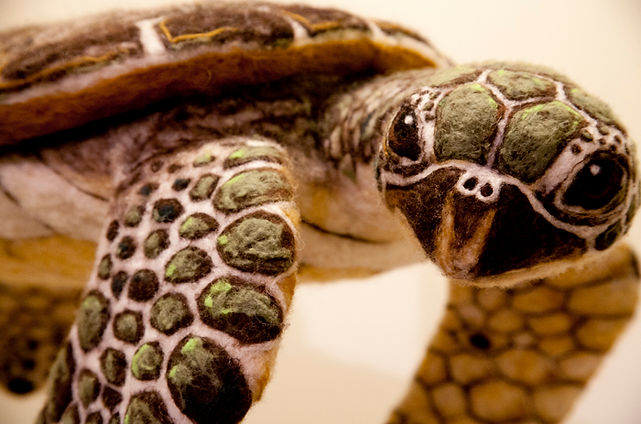
Music off?
Art 5


ELIZA HAMILTON
Eliza Hamilton has been sculpting wool for 8 years. Her works are displayed in Ashland, Oregon, at a gallery which is below the art studio where she spends most of her waking hours. This fiber artist not only creates, but also teaches art, using her unique medium. In much the same way that the great artists of the past sponsored her literacy, she now sponsors literacy for her students.
Hamilton, like her art and like literacy, is in constant motion: striving forward, spreading out, exploring, and creating. In this narrative, she discusses the importance of visual literacy. Certainly, it is experiencing a re-birth. Author Diana George (2009) believes that with the tools of the digital world at one’s fingertips, the imagination of the 21st century student shows visual literacy as no longer a means of simply supporting text, but standing on its own merit as a mode of composition. So, visual literacy is being considered by George as having the same “status in the tradition of communication instruction” (pp.1430-31).
George emphasizes that visual literacy must communicate meaning via “images, layout or graphics” (p. 1436). Hamilton explains that sculptures cross boundaries from visual literacy into an atypical literacy: touch. The addition of touch, another dimension to the visual, gives the “reader” a different lens altogether. Depth and weight and the idea that a sculpture occupies actual space, unlike a painting that shows something in an actual space, offer the reader an entirely new perspective. Regarding visual literacy’s new position in the hierarchy of literacy pedagogy, the New London Group purports the following:
Literacy pedagogy must now account for the burgeoning variety of text forms associated with information….This includes understanding and competent control of representational forms that are becoming increasingly significant in the overall communications environment, such as visual images and their relationship to the written word…. (as ctd in George, 2009, p. 1433)
In other words, Hamilton’s three dimensional artifacts have a place of relevance in the world of communication and in the composition classroom. Liza’s personal search for literacy continues as she seeks to find ways in which to improve her representation of nature and animals. She hopes to create a rhetorical purpose to her art. Diana Georges’ (2009) assertion that “the verbal and visual both involve a communication of meaning” reiterates the importance of meaning from the standpoint of the author/artist or finding it from the standpoint of the “reader”(p. 1443).


